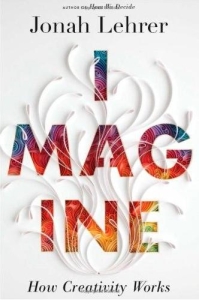 Did you know that daydreaming or having ADHD could actually be beneficial to your creativity, which in turn could help you in many careers, such as business, advertising and science? Jonah Lehrer, in his best-seller Imagine, offers such theories, based on a culmination of scientific studies and uses numerous examples throughout the book to back up his set of factors that motivate creativity.
Did you know that daydreaming or having ADHD could actually be beneficial to your creativity, which in turn could help you in many careers, such as business, advertising and science? Jonah Lehrer, in his best-seller Imagine, offers such theories, based on a culmination of scientific studies and uses numerous examples throughout the book to back up his set of factors that motivate creativity.
In the case of ADHD, Lehrer states that having focus can actually hinder creativity and out of the box thinking. He writes that stimulants, such as caffeine, Adderall and Ritalin can make “epiphanies” less likely. He cites a University of Memphis study, where a large number of undergrads were given a variety of creative tests, and those with ADHD (and presumably not taking their medications) scored significantly higher. Lehrer believes that a mind that is too focused can be inhibited and not open to breakthroughs.
The theory on daydreaming seems to strike a chord for many. Just this week in Inc.com, Jessica Stillman wrote about Lehrer’s theory and the importance of daydreaming for those “Eureka” (or as Oprah calls “aha”) moments. Lehrer emphasizes that effective daydreaming can not be focused – it has to be the pure old-fashioned kind, uninitiated and free-flowing. In this state, the brain is able to blend concepts that would previously have been filed away in separate areas.
In Christopher Chabris’ May 11, 2012 New York Times review of the book (Boggle the Mind) he finds mistakes with Lehrer’s scientific evidence. For example, he writes that visual information from the left eye does not go only to the brain’s right hemisphere; information from the brain’s left visual field does. Chabris’ complaint is that Lehrer, as a scientific writer, should ensure that all of his facts are correct. Still, Chabris acknowledges that the book can be used as a source of inspiration, as long as it is looked at carefully.
Throughout the book, Lehrer gives many inspirational and convincing stories for his theories of creativity, among them how Post-it Notes were conceived and how Bob Dylan found his way out of a stale period. Other chapters are devoted to “letting go,” where Yo Yo Ma finds his genius by emotionally connecting to his work. Lehrer also finds the urban setting as inspiration and cites the musician David Byrne’s bike rides through New York as a source of his creative ideas.
Lehrer writes of two final factors that are triggers for creativity. The importance of being the Outsider is one factor – looking from outside the traditional mode of thinking. For this reason, Lehrer feels that young people can be extremely creative, for they have less pre-conceived ideas. Group work is the other factor; many creative concepts are born of the sharing of ideas. Lehrer writes, “Unless we learn to share our ideas with others, we will be stuck with a world of seemingly impossible problems.”
While this issue of our newsletter looks at another kind of Cloud (the virtual one) and its sgnificance and benefits, thinking in the cloud (the imagination) can also be beneficial to you work and your life.


